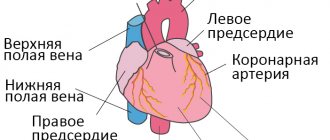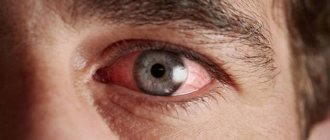Unfortunately, many of our compatriots suffer from acute carbon monoxide poisoning. Often these accidents occur in everyday life due to negligence or failure to comply with personal safety measures. And with the beginning of the heating season, the number of acute CO intoxications increases significantly. I would like to tell the reader about carbon monoxide poisoning in more detail - in this article we will talk about the causes of poisoning, symptoms and treatment. Shall we start?
Toxicologists name 3 main reasons why carbon monoxide is so dangerous:
- lightning action;
- severe toxicity;
- high penetrating ability.
Thanks to its “invisibility” and “omnipresence,” the SO received the nickname “silent killer.”
Hypoxia in case of poisoning is due to the fact that the poison blocks the ability of red blood cells to deliver oxygen to all organs. The first symptoms of intoxication appear.
The risk of death from carbon monoxide poisoning increases with debilitating diseases - anemia, diabetes, asthma, angina. In addition, smoking and alcohol abuse aggravate intoxication.
Causes of poisoning
Man has been “dealing” with carbon monoxide since prehistoric times - as soon as he learned to make fire. It is possible that our distant ancestors also suffered from inhalation and needed help in their black-heated homes. Alas, even today, technical malfunctions of equipment, ventilation, and non-compliance with the construction technology of stoves and fireplaces are not uncommon, leading to poisoning.
Natural disasters
Perhaps, if on August 24, 79 AD, the residents of Pompeii had received emergency assistance for carbon monoxide poisoning during the famous eruption of Vesuvius, perhaps there would not have been so many tragic deaths...
Fires
Remember the summer of 2010? Due to the abnormal heat in the Moscow region, peat bogs caught fire en masse - it was then that many residents of the capital and surrounding areas felt the “delights” of the first signs of carbon monoxide poisoning.
Human activity
An undeniable “contribution” is made by airplanes, water, rail and road transport. The first symptoms of carbon monoxide poisoning are often observed among representatives of a wide variety of professions: miners, pilots, firefighters, garbage disposers, cooks, traffic controllers.
There are often cases of carbon monoxide intoxication after an ordinary walk along the streets of a busy metropolis!
One of the types of air pollution in industrial centers is smog: a suspended gas contains various toxic molecules, including CO. For example, the smog that enveloped London in 1952 caused the death of 12 thousand citizens and the exacerbation of bronchial and lung diseases in 100 thousand British victims of carbon monoxide poisoning.
State Autonomous Institution "Regional Clinical Dermatovenerological Dispensary"
Domestic gas poisoning may not be immediately noticeable. It is preceded by the child staying for some time without the control of an adult. Often parents do not even suspect that the cause of their child’s illness is poisoning. Therefore, it is very important to know the possible symptoms in order to be able to recognize poisoning among other ailments and provide timely assistance. First of all, a change in the child’s behavior can prompt thoughts of poisoning: he was just active, cheerful, playing happily, and suddenly he lay down, became lethargic, apathetic, fell fast asleep and does not wake up when trying to wake him up.
Parents should be wary if: - the child falls asleep at an unusual time; - sleeps for a long time during naps for no apparent reason; - inhibited or overly excited, restless; - walks staggering if he has already walked confidently before; - speaks indistinctly, if speech was clear before; - coordination of movements was suddenly impaired; - the child is unusually pale, sweating, or, conversely, the skin is dry and red; — the child’s body temperature is reduced; - the child has excessive salivation or dry mouth; - the pupils are narrowed or excessively dilated, the width of the pupils does not correspond to the lighting (it is known that in bright light the pupils narrow, and in the dark they dilate); More serious symptoms indicating possible poisoning: - confusion, hallucinations; - convulsions, loss of consciousness; - heart rhythm disturbances, weak, frequent or rare pulse; - increase or decrease in blood pressure; - altered, noisy, rapid or rare breathing. In case of poisoning or the slightest suspicion of it: - immediately call an ambulance, take him out into the fresh air, and do not self-medicate under any circumstances; - try to find out the possible cause of poisoning if you do not know it for sure: ask the child, if he can already explain, examine his body, face, clothes for specific odors, stains, redness and burns of the skin and mucous membranes; - inspect the place where he was recently, potentially dangerous places in your home (first aid kit, place where household chemicals are stored). Remember if you used any medications during the day or if you left them in an accessible place. Have you given the child any medications, have you put drops in your nose, were you visiting yesterday or today, or have guests come to see you; - if the child is unconscious, he may suffocate from the retraction of the tongue or from vomit entering the respiratory tract. In this case, it is better to lay the child on his side, monitor his pulse and breathing until the ambulance arrives. If necessary, clean your mouth from vomit with your finger wrapped in a handkerchief and make sure that possible vomiting does not interfere with breathing; - collect the things necessary for the child’s hospitalization; What not to do: You cannot independently induce vomiting in unconscious children and in cases where you have absolutely no idea what the child could have been poisoned with and do not see signs indicating a possible cause. You should not self-medicate for poisoning. In case of poisoning, it is always better to call than not to call a doctor. should not be given without consulting a doctor, even the most seemingly “harmless” ones. For example, milk can be given in case of poisoning with acids and alkalis, but if you dilute the gasoline that enters the body with milk, the poison will be absorbed faster. We must not forget about ourselves. If a child has been poisoned by chemicals or volatile substances, carbon monoxide, before helping him, protect yourself: if necessary, put on gloves, open windows, etc. These measures are a manifestation of care for the child, because if you get hurt, who will help him?
Gas addiction in children
It would seem that the boom in substance abuse has subsided; Moment glue has ceased to be the “leader” among “experimenting” teenagers. Meanwhile, the teenagers themselves, feeling freedom, came up with a new “fashion”.
Today it is “fashionable” to inhale or drink lighter gas.
Why do teenagers choose it? Firstly, it is accessible, you can always buy it freely at any trade pavilion. The low price also plays a role. Secondly, after inhaling the gas, the effect of intoxication quickly sets in.
How can a parent recognize that a child has started breathing some kind of rubbish?
After gas, the child, as a rule, behaves as if drunk, but you will not smell the alcohol. He may also be overexcited or behave aggressively, or, on the contrary, lethargy and apathy may appear - this can also be a sign of using something narcotic. In addition, the child may experience nausea, vomiting, dizziness, even loss of consciousness. There are many fatal gas poisoning cases around the world. After sniffing gas, a teenager cannot control himself and can harm others. Thus, there are frequent cases of murders during group “sniffing”. Think about it: just because your child doesn’t drink or smoke, that doesn’t mean there’s no reason to worry. This type of substance abuse becomes addictive very quickly and does not bring the desired “high” over time. As a rule, if a child has a hard time at home, problems begin at school and with friends. Then he joins a company of similarly dysfunctional guys. They begin to “look for adventure” together. We need to be more attentive to children and their surroundings! Substance abuse is usually experienced by minors, most often between the ages of 8 and 16, who, in search of new sensations and in order to look “cooler” in front of their peers, agree to try some available poison. It is terrible, but almost impossible to protect children from substance abuse. Parents probably don’t even suspect that their children are practically playing with death. Teenagers most often use substance abuse, hiding in secluded places, or doing it at home while their parents are at work. Unfortunately, even doctors cannot immediately determine that a child is a substance abuser. At the same time, under the influence of gases in the body, the functions of the brain and lungs are impaired, bleeding, tissue death of the esophagus and gastrointestinal tract are possible; under unfavorable circumstances, they can cause cardiac arrhythmia, which leads to death within a few minutes. A friendly atmosphere at home and trusting relationships with family are the key to well-being!
How to recognize "invisibility"?
In case of mild poisoning, the face turns red and there is an irresistible drowsiness. Alas, the decision to take a nap in such a situation can be a fatal mistake!
Moderate carbon monoxide poisoning signals a mortal danger with severe shortness of breath, and the symptoms listed above are aggravated even further.
Acute severe carbon monoxide poisoning is characterized by the appearance of convulsions, suffocation, arrhythmia, pulmonary edema, and mental changes. The victim may be found unconscious.
Physiological causes of burning in the chest
Experts identify a number of initiating factors for such a phenomenon as a burning sensation in the chest. The most common of these is poor diet, including fatty, spicy, salty foods, carbonated water and fast food, along with frequent overeating or eating food before bed.
The above leads to the contents of the stomach entering the esophagus, where it irritates the mucous membrane, which causes discomfort. They are accompanied by nausea, heartburn and belching, as well as bloating. In order to exclude this, it is enough to change your diet by minimizing the above-mentioned foods, optimizing portion sizes and eliminating the consumption of food before bedtime.
The same can be said about excessive consumption of coffee and alcoholic beverages, as well as smoking. All of them can cause a burning sensation in the chest, which will stop as soon as their consumption is reduced to a reasonable limit. It is important to understand that it is not the norm and its appearance is a reason to visit a doctor.
A number of reasons are associated with diseases of the cardiovascular system, characterized by the inability of blood vessels to provide the heart with a sufficient volume of oxygen. This occurs with ischemia, which is manifested by a local decrease in blood supply due to narrowing or blockage of the arteries, due to which the most important organ of the human body suffers.
Do not forget about neurological factors, when a burning sensation occurs due to compression or damage to the nerve ending or in stressful situations, with neuropsychiatric disorders. In addition, it can be caused by pathological conditions characterized by damage to the bronchial mucosa or trachea.
First aid for carbon monoxide poisoning
Rescuers provide urgent evacuation of people from premises contaminated with toxic fumes. Oxygen inhalation is the first medical aid for carbon monoxide poisoning.
Ambulance doctors perform pulmonary-cardiac resuscitation, symptomatic therapy, and administer an antidote for carbon monoxide poisoning.
After providing first aid for carbon monoxide poisoning, victims are taken to toxicology or intensive care departments, where intensive detoxification therapy and symptomatic treatment are carried out: anticonvulsants, diuretics, cardiac, hormonal medications, vitamins and sorbent No. 1 - Enterosgel.
Hyperbaric oxygen therapy will help avoid neurological complications.
To reduce intoxication, after carbon monoxide poisoning, physiotherapeutic treatment methods, herbal medicine and massage are used.
Where to go if you have a burning sensation in your chest?
Are you a resident or guest of the capital and are you faced with a similar problem? Contact CELT. Our clinic is multidisciplinary and has departments of various specializations. You can make an appointment with a cardiologist, therapist, neurologist or gastroenterologist and get the help you need.
Our diagnostic department offers ample opportunities for correct diagnosis and identification of pathological conditions in the initial stages of development. Our staff is staffed with highly qualified specialists: doctors of the highest category, candidates and doctors of science with decades of medical practice behind them.
You can find out our prices by going to the “Services and Prices” tab in this section. To avoid misunderstandings, we recommend that you check the numbers with our operators by calling the number.
Preventing carbon monoxide poisoning
To prevent an accident, you must:
- ventilate the premises, do not use faulty gas equipment, check the permeability of the chimney;
- comply with safety regulations at the enterprise;
- properly operate baths and saunas;
- Avoid long stays near busy highways.
Remember that timely first aid for carbon monoxide poisoning gives the victim a chance to survive and prevent the sad consequences of intoxication!
Operating principle
When a person inhales air that contains a high content of carbon monoxide, it is transported to the respiratory part of the body, where it is absorbed by the blood cells. The chemical component is quite similar to hemoglobin, myoglobin and enzymes that contain iron. Carbon dioxide freely enters into a process with these elements, during which a type of oxygen is formed that is unable to be transported into carboxyhemoglobin tissues. A patient with this diagnosis develops hypoxia. Slow dissolution of compounds has an adverse effect on the nutritional properties of internal organs and tissues. In combination with this, a process of unstable operation of biochemical phenomena occurs, which is based on the functioning of iron-containing enzymes. With the accumulative activity of under-oxidized metabolic products, additional poisoning occurs, spreading to the central nervous system and other organs.
Which doctor should I contact if I have a burning sensation in my chest?
Regular repetitions of this symptom are a reason to contact a therapist. He will conduct an examination, collect anamnesis, ask questions that interest him - and either prescribe treatment or refer him to:
- gastroenterologist - if gastrointestinal diseases are suspected;
- orthopedist - if osteochondrosis is suspected;
- neurologist - if osteochondrosis is suspected;
- cardiologist - if you suspect diseases of the cardiovascular system.
They, in turn, will prescribe diagnostic tests to make an accurate diagnosis.







